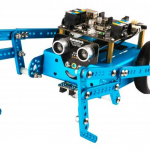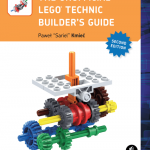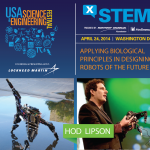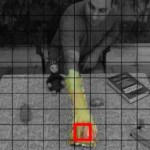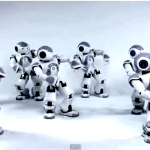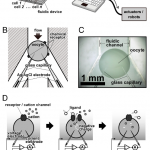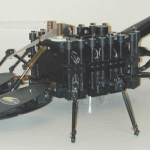Robotics
The Makeblock mBot Add-on Pack-Six-legged Robot V1.1 is an add on for the Makeblock DIY mBot 1.1 Kit (Bluetooth Version) - STEM Education - Arduino - Scratch 2.0 - Programmable Robot Kit for Kids to Learn Coding & Robotics - Pink or any of its variants.
The makeblock robot is an arduino technology robot. It can be controlled with a supplied controller, or operated from any of several different kinds of computing devices (such as your cell phone) using an app. It can be programmed using the Arduino interface (from a Mac, Windows or Linux computer), but the robot comes with built in…
The Unofficial LEGO Technic Builder's Guide by Pawet "Sariel" Kmiec (Second Edition) tells you how to build machines, models, robots, etc. that will work.
You need to construct these things in a way that ensures they won't easily fall apart, and that requires a certain amount of engineering. There are some fairly expensive and specialized Lego Technic pieces that you may not have on hand, and this book can help you emulate them. How do you matcha motor or servo to a specific task? You need to know some stuff to make that decision sensibly. How do you make a transmission? Or an…
X-STEM - presented by Northrop Grumman Foundation and MedImmune - is an Extreme STEM symposium for elementary through high school students featuring interactive presentations by an exclusive group of visionaries who aim to empower and inspire kids about careers in science, technology, engineering and mathematics (STEM). These top STEM role models and industry leaders are sure to ignite your students’ curiosity through storytelling and live demonstrations.
Our spotlight on our X-STEM Speakers continues with Robotics Engineer Dr. Hod Lipson from …
The idea of “seeing the world through the eyes of a child” takes on new meaning when the observer is a computer. Institute scientists in the Lab for Vision and Robotics Research took their computer right back to babyhood and used it to ask how infants first learn to identify objects in their visual field.
How do you create an algorithm that imitates the earliest learning processes? What do you assume is already hard-wired into the newborn brain, as opposed to the new information it picks up by repeated observation? And finally, how do you get a computer to make that leap from a data-crunching…
"Listen, and understand. That terminator is out there. It can't be bargained with. It can't be reasoned with. It doesn't feel pity, or remorse, or fear. And it absolutely will not stop, ever, until you are dead." -Kyle Reese, the Terminator
Sure, they may look innocent now. Maybe you think they'll even live peacefully with us and create nothing but beauty, as Florence + the Machine might have you believe with their song,
Cosmic Love.
But the apocalypse will soon be upon us. And I think that this cute fella may be just the thing that ushers it in.
NAO robot, courtesy of Aldebaran…
Last week, I wrote a piece for Motherboard about an android version of the science fiction writer Philip K. Dick. The story of the android is truly surreal, stranger than even Dick's flipped-out fiction, and I recommend you pop over to Motherboard and mainline it for yourselves. For the piece, I interviewed the lead programmer on the first version of the PKD Android, Dr. Andrew Olney. Aside from bringing science fiction legends back from the dead, Olney is an Assistant Professor in the Department of Psychology at the University of Memphis and Associate Director of the same university's…
A lot of synthetic biology is about getting biology to be more like electrical engineering, designing genetic "logic gates" to create a living circuit board. Beyond analogies, however, cells have many fascinating electrical properties--proteins that transfer electrons like wires, membranes that separate ions and create an electrical charge that drives the metabolism of the cell, channels through these membranes that open and close to activate an electro-biological response. Electrons are electrons whether they are in proteins or copper wires, and many scientists have designed ways to connect…
I've written before about artificial life researchers from the 18th and 20th centuries working to create robots that attempt to recreate the human voice. I recently saw this terrifying video over at the PopSci blog of a recent robotic voice machine and wanted to share it:
Over at Noise For Airports, Nick shares a very different way to combine biology, computer science, and music--The Heart Chamber Orchestra, which plays music generated from the rhythm of their combined heartbeats in real time:
As you can probably imagine, there are a lot of very interesting things that pop up when you have a google alert for "synthetic biology." Here is today's special find: a short dubstep song about synthetic biology by Dysoniq, featuring a voice talking about computer chips for your brain from this video, an interesting hour-long BBC presentation about intelligent robots (thanks again, Google!).
Synthetic BiologybyDysoniq
Because of my recent interest in autonomous, biologically inspired robots, my friend Tami sent me some fascinating links about designs and concepts for future flesh eating robots.
From New Scientist, furniture that captures vermin and uses the biomass to power fuel cells that run small electronics:
From Wired, Human corpse powered robots being developed by the Defense Department:
From the file marked "Evidently, many scientists have never seen even one scary sci-fi movie": The Defense Department is funding research into battlefield robots that power themselves by eating human corpses. What…
Synthetic biology deliberately equates genetic networks to electronic circuits, cells to machines, organisms to factories. In synthetic biology, every living can be thought of as a cyborg, a living machine that can be manipulated, changed to meet our needs, parts swapped in and out like a computer. Some projects in synthetic biology and biologically inspired engineering hope to bring the analogy a step further, combining biological and actual electronic and mechanical components into a single engineered unit, with the goal of essentially making tiny autonomous cyborgs.
There are a lot of…
Things are gearing up for iGEM 2010, and in looking through some of the incredible work of the 2009 teams, I remembered the University of Washington Software team, who made an awesome lego robot that can move small volumes of liquid around in 96-well plates, a crucial and typically very expensive task in high-throughput biology. What makes the team especially remarkable is that the only member is an 11 year old kid, Gabriel See, who designed and built the robot on his own. Gabriel had the flu during the jamboree, so he unfortunately couldn't fly to MIT to share his work, but he did get his…
Modern day biological engineering and artificial life research focuses on the microscopic, the molecular, the informational, the stuff of the scientific revolutions of the past one hundred years. Our current synthetic biologies aim to turn the living into the designed, the wet into the computational, the complex into the understandable. In the 1700's, the interplay between the living and the mechanical was reversed; engineers were trying to make machines look and feel more like living things--soft, flexible, moist. Studying these historical artificial life technologies provide a valuable…
My first exposure to programming was as a nerdy elementary schooler playing with Logo, a simple computer language written for educational use as a way to teach basic concepts in programming and computer science. The language controls the behavior of the "turtle," a triangular cursor in the middle of the screen that can be programmed to move around and draw lines.
In one of the kid's versions I remember that the cursor even looked like a little turtle on the screen, not just a triangle. As you probably could tell, I'm fascinated by how computer scientists use language from living things and…
tags: medicine, surgery, robots, Catherine Mohr, TEDTalks, streaming video
In this video, surgeon and inventor Catherine Mohr tours the history of surgery (and its pre-painkiller, pre-antiseptic past), then demonstrates some of the newest tools for surgery through tiny incisions, performed using nimble robot hands. Fascinating -- and very graphic. This is an inspiring presentation, but she neglected to mention all the other people who contribute to this technology, from engineers and computer designers to scientists. [21:28]
TEDTalks is a daily video podcast of the best talks and…
Having lived with fire ants, stepped in fire ants, laid down with fire ants, and been bit just about everywhere by fire ants, the news that parasitic flies turn fire ants them into zombies by eating their brains pleases me immensely.
Speaking of pleasure: Vaughn whacks the dopamine = pleasure meme.
Sharon Begley says Obama may get a lot done, but he can't erase stereotype threat (so far).
We may be dozing, but Europe is ordering its swine flu vaccine. D'oh! Update: We're getting a start too.
"Good night, sleep tight, I love you." Why consistent bedtime routines work.
Why the best…
